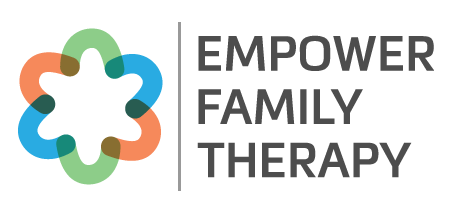Breaking the Chain: How to Identify and Overcome Negative Relationship Patterns
Recognizing the Pattern
Imagine it’s Tuesday night, and you’ve had a long, stressful day—perhaps you’ve been juggling work, managing the kids, or balancing extracurriculars. Tensions are running high, and before you know it, a fight starts to brew. This is a pattern. It’s not just the stress of the day; it’s a cycle that’s repeating itself.
What happens next is crucial. When couples start noticing these patterns, they often realize that the triggering event—the thing that sets off the pattern—doesn’t just happen on Tuesday night anymore. Once the pattern becomes repetitive, it starts to sneak up earlier in the week. What once was a Tuesday night tension build-up might start on Monday morning—or even Sunday night.
This means that the trigger isn’t just the stress of the day anymore. It’s the anticipation of that stress, which builds earlier in the week. And this can leave both partners feeling confused, unsure of why the tension is building before the usual trigger even appears.
Small Triggers, Big Reactions
Let’s take another example. Maybe your child has a stuffy nose, and you’ve noticed over time that this leads to restless nights. At first, it might have been just a minor inconvenience, but over the past few months, it’s become a much bigger deal. Now, when you hear that first sniffle or sneeze, the anxiety starts to rise. It’s no longer the sleepless night itself that causes the reaction; it’s the first sign of illness that brings it all back.
What happens here is that the emotional response gets tied not just to the present moment but to a larger pattern that has built up over time. You might not even fully understand where the anxiety is coming from in the moment. What seems like a small issue, like a child’s sniffle, becomes the cue for a much bigger emotional reaction because it’s part of an ongoing cycle that’s been triggered.
How to Break the Pattern
Let’s talk about how to break free from these patterns. This is where therapy can make a huge difference. In therapy, you gain an outside perspective, which is invaluable when trying to understand what’s going on in your relationship. A therapist can help you zoom out and ask things like, “What was really going on Monday night?” or “What exactly triggered that reaction?”
Once you have that clarity, you can disrupt the pattern. The first step is shining a light on it. The more clearly you can identify the pattern—what it looks like and when it typically occurs—the less power it will have over you. It’s like taking the pattern out of the shadows and bringing it into the light. This makes it easier to manage and change.
Intentional Disruption of the Pattern
One of the most effective ways to break a pattern is by intentionally disrupting it. With couples, I often start by helping them get crystal clear about what the pattern looks like. When we’re able to name the pattern and really understand its dynamics, we can begin to intervene and shift the course. This may involve recognizing the first signs of the pattern and using tools to respond in a healthier, more constructive way.
Taking Control and Breaking the Cycle
The key is to address the pattern early on. Once you become aware of the triggers and the emotional reactions that follow, you can start to take control of the situation. Instead of waiting until the tension explodes on Tuesday night, you can notice it starting to build on Monday morning or even Sunday evening. This early recognition gives you the chance to respond differently and to de-escalate the situation before it gets out of hand.
Understanding these patterns, especially with the help of a therapist, helps you and your partner break free from the emotional rollercoaster. By bringing the pattern into the light, you’ll be able to replace old, negative reactions with healthier ways of communicating and handling stress.
Ready to Break the Cycle?
If you’re noticing patterns like this affecting your relationship, it’s time to take action. Recognizing and addressing these patterns will help you move beyond the emotional highs and lows and create healthier, more stable connections. By identifying the pattern, understanding the triggers, and learning how to respond more constructively, you can transform your relationship.
Are you ready to take the first step toward breaking free from these cycles and building stronger, more positive relationships? Start by recognizing the patterns and taking proactive steps to create the change you want. Therapy and self-awareness are powerful tools that can help you navigate these challenges and build deeper, more fulfilling relationships.
If you have any questions or would like to learn more, we'd love to hear from you. Let’s start breaking those patterns today!
